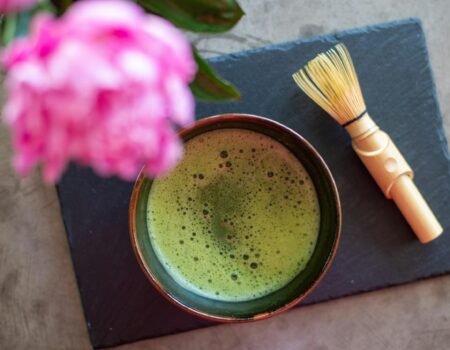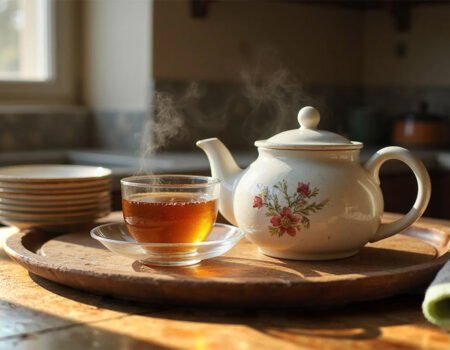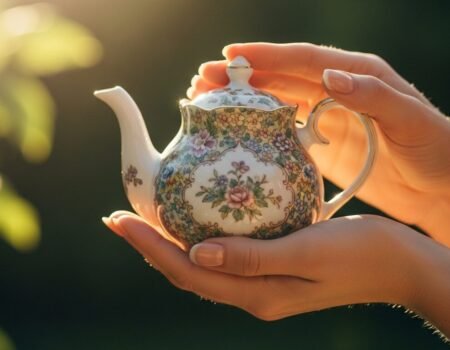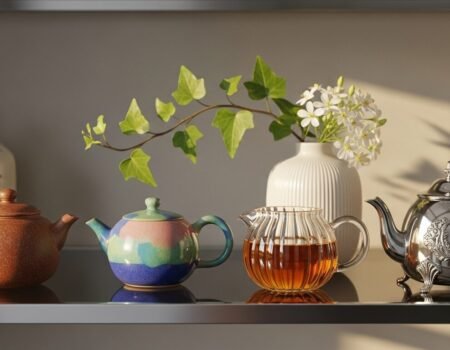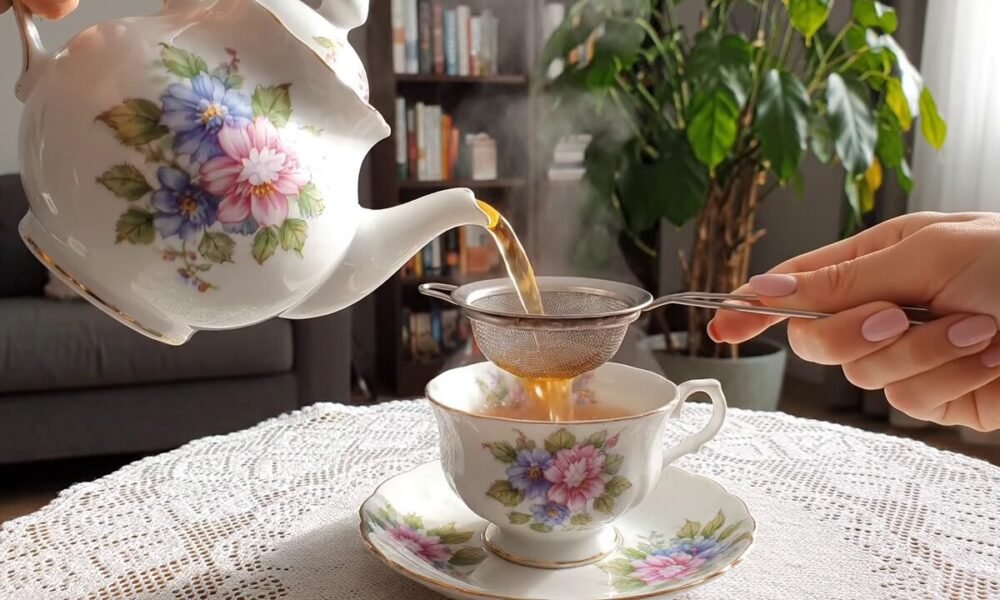
A Guide to the World of Loose Leaf Infusers and Strainers
Index
Finding the right tea infuser can feel like a challenge when faced with tiny tea leaves clogging your cup or weak brews from limited leaf expansion. Tea infusers come in many styles, from simple balls to elaborate baskets that affect how your tea tastes.
This guide will show you the best tea infusers and strainers that make brewing loose leaf tea simple and mess-free. Get ready to transform your daily tea ritual.
Key Takeaways
- Basket infusers provide more space for tea leaves to expand fully, creating better flavor than cramped tea balls.
- Stainless steel infusers resist rust and won’t affect tea flavor, making them ideal for daily use.
- Fine mesh prevents small tea particles from escaping while allowing proper water flow for optimal steeping.
- Integrated infusers built into teapots and mugs offer a streamlined brewing experience with easy cleanup.
- Most teas need 1-2 teaspoons of leaves per 8 ounces of water, with steeping times varying from 1-5 minutes based on tea type.
Understanding Tea Infusers and Strainers
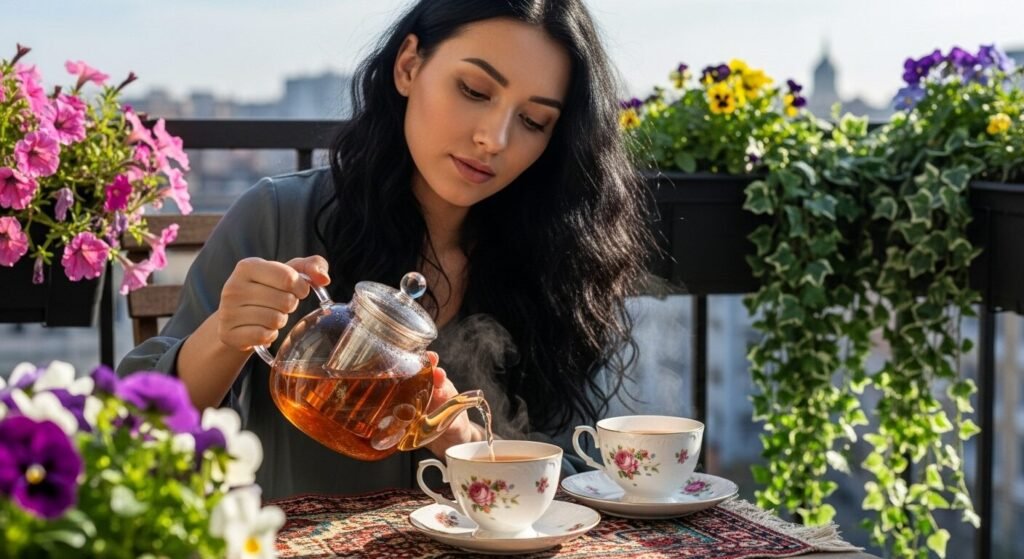
Tea infusers and strainers serve as vital tools for brewing loose leaf tea with full flavor. These devices hold tea leaves while allowing water to flow through, creating a clean cup without floating bits.
Purpose and Basic Function
Tea infusers serve as essential tools for brewing loose leaf tea without the mess. These handy devices hold tea leaves during the steeping process, allowing hot water to flow through while keeping the leaves contained.
Most infusers feature a mesh design that permits water to circulate freely around the leaves for proper flavor extraction. Strainers, on the other hand, filter already-brewed tea from a teapot that lacks a built-in filter system.
The main goal of both tools is simple: they prevent tea leaves from floating in your cup while you drink. Good infusers balance proper leaf expansion with effective filtration. Basket-style infusers often work best because they provide ample space for leaves to unfurl and release their full flavor profile.
This makes a big difference in the taste quality compared to cramped ball infusers that restrict leaf movement.
Key Distinction: Infusers vs. Strainers
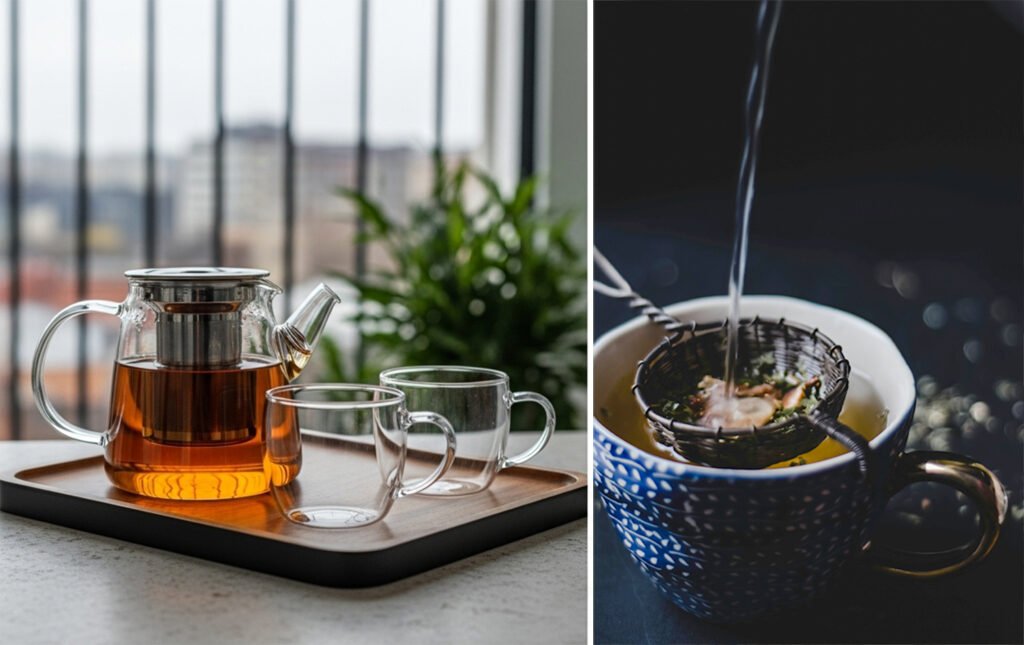
Infusers and strainers serve different purposes in the tea-making process despite their similar appearance. Infusers hold loose-leaf tea during brewing and stay submerged in water, allowing flavors to develop fully.
These devices, which date back to China’s Tang Dynasty, create space for tea leaves to expand and release their full taste profile. Most quality infusers feature stainless steel mesh that prevents small particles from escaping while maximizing water flow around the leaves.
Strainers function as filters that separate brewed tea from leaves after steeping is complete. Unlike infusers, they remain stationary in the brewing vessel rather than being removed.
Strainers work particularly well with larger loose-leaf varieties since their design prevents leaf escape more effectively. Tea enthusiasts often prefer using both tools together for the perfect cup—an infuser basket for steeping and a fine mesh strainer for pouring.
Next, we’ll explore the common types of tea infusers available to modern tea drinkers.
Common Types of Tea Infusers
Tea infusers come in several popular styles that serve different brewing needs. Each type offers unique benefits for tea lovers who want to extract the best flavor from their loose leaf tea.
Tea Balls
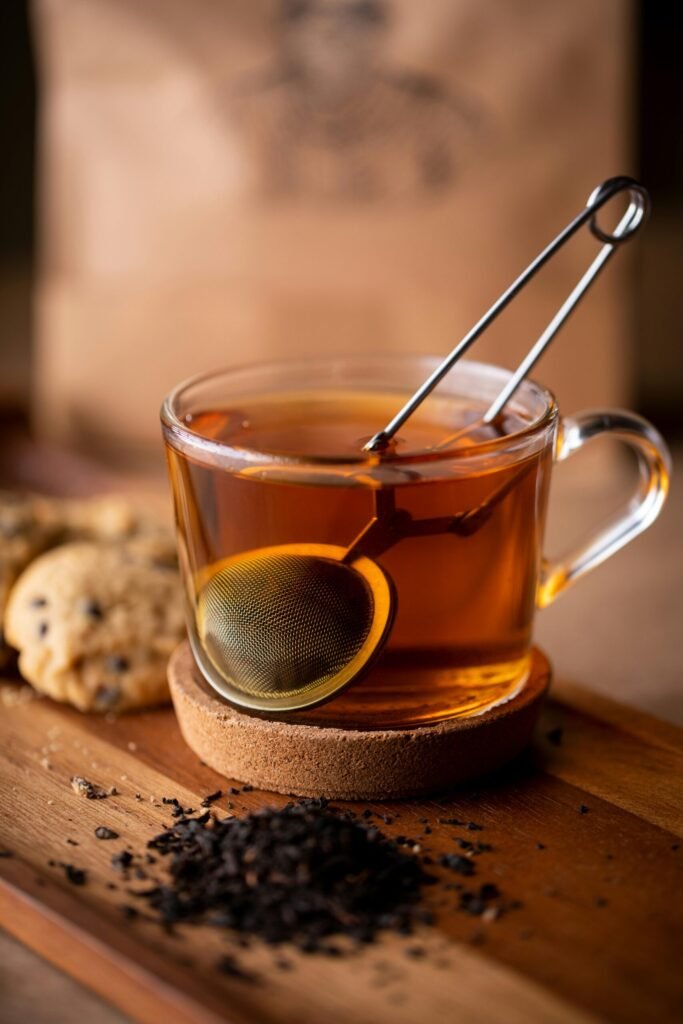
Tea balls offer a simple way to brew loose leaf tea without the mess. These small, mesh containers typically come in a spherical shape with a chain or handle for easy retrieval from your cup.
You place your tea leaves inside the ball, close the latch, and drop it into hot water. The tiny holes in the mesh allow water to flow through while keeping the leaves contained. Many tea balls are made from stainless steel, making them durable and easy to clean after use.
Tea balls work best with medium to large leaf teas since fine particles might escape through the mesh holes. While convenient, they sometimes limit proper leaf expansion compared to basket infusers.
The compact size makes them perfect for single cups of tea, though they may not hold enough leaves for larger teapots. Next, let’s explore basket infusers and how they differ from tea balls.
Basket Infusers

Basket infusers rank among the most practical tools for brewing loose leaf tea. These wide, cup-shaped containers give tea leaves plenty of room to unfurl and release their full flavor.
Most basket infusers feature stainless steel mesh that keeps even the smallest tea particles from escaping into your cup. The Fiore Teaware Collection offers excellent removable stainless-steel infuser baskets that fit perfectly in their teaware.
Basket designs typically rest on the rim of your mug or teapot, making them easy to remove after steeping. Their larger size allows for better water circulation around the leaves, creating a more balanced brew than smaller infusers provide.
Many tea lovers prefer these infusers because they work equally well with fine rooibos tea and large leaf varieties. Tea Fort also sells replacement infuser baskets specifically for their KATI Cups, extending the life of your favorite tea accessories.
Integrated Infusers
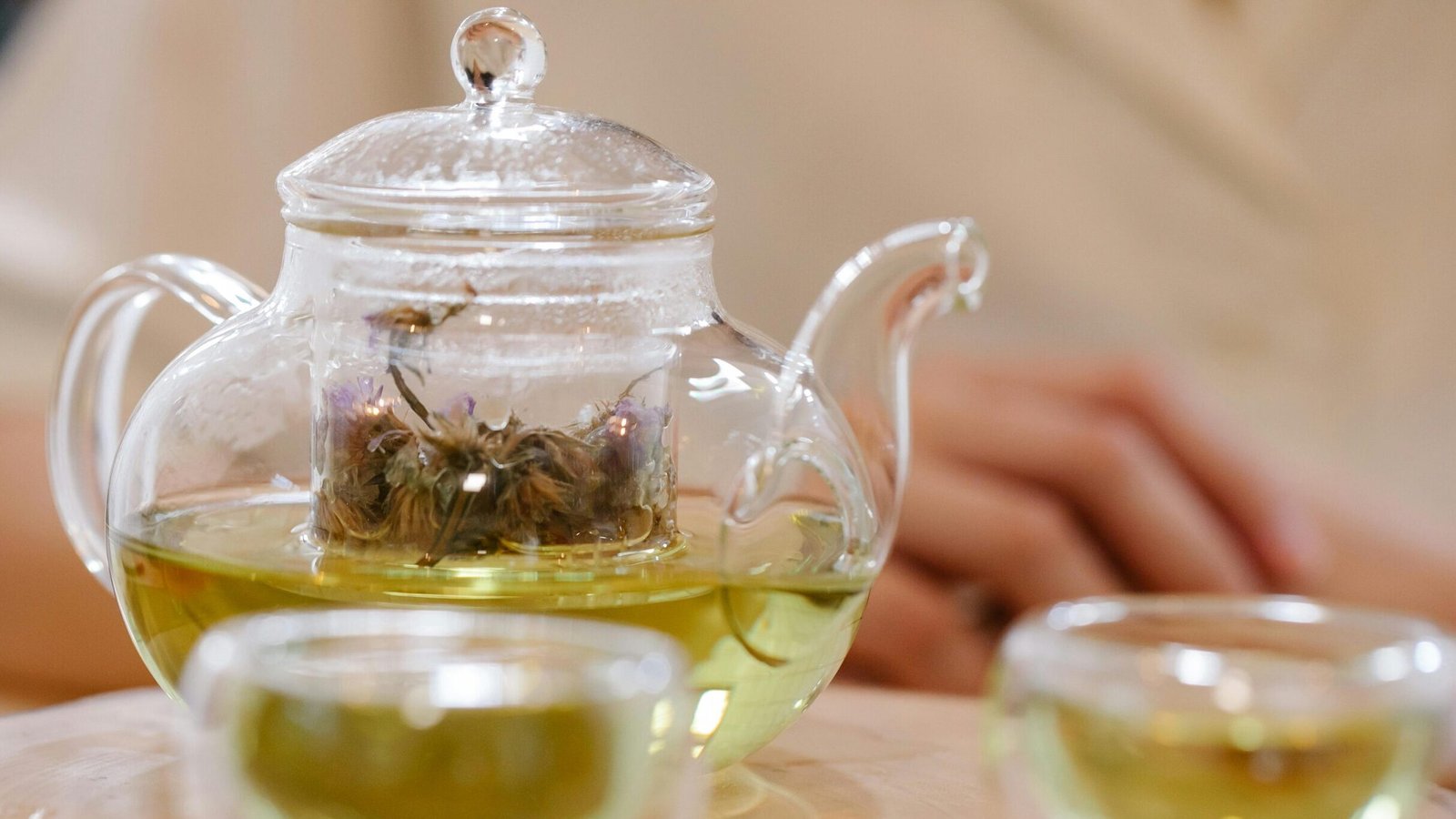
Unlike basket infusers that sit inside your cup, integrated infusers come built right into teapots and mugs for a streamlined brewing experience. The DavidsTea Nordic Mug with Infuser stands out as a top recommendation for tea lovers who want simplicity and style.
These clever devices feature infuser baskets made from stainless steel, silicone, plastic, or glass that nestle perfectly within their matching vessels.
Integrated infusers offer major benefits for loose leaf tea fans. They allow tea leaves to expand fully, creating better flavor in each cup. Most designs let you remove the infuser once your tea reaches perfect strength.
Tea drinkers appreciate that used leaves can go straight to compost bins, making these tools eco-friendly choices. During testing, we found integrated models scored high marks for taste quality, brewing effectiveness, and easy cleaning.
Essential Selection Criteria for Tea Infusers and Strainers
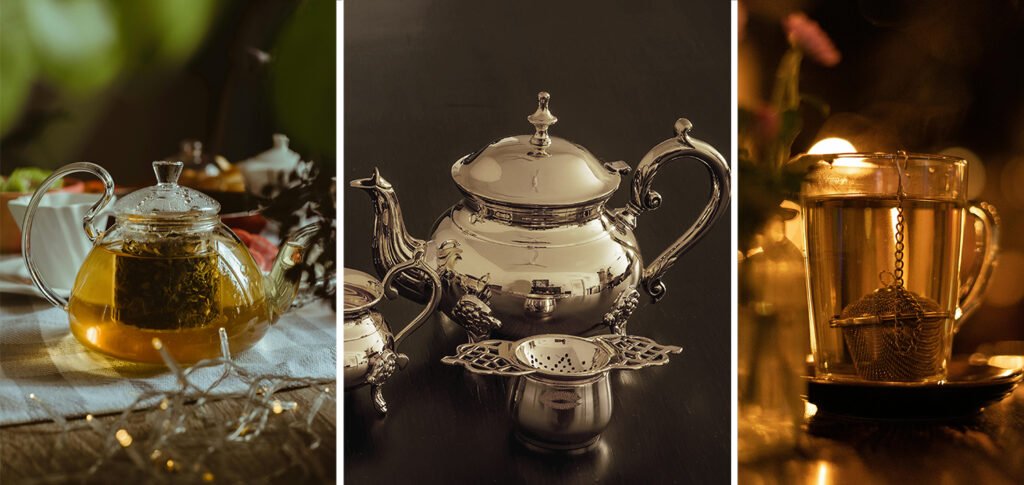
Choosing the right tea infuser makes a big difference in your brewing results. You need to consider several key factors that affect both tea taste and your brewing ease.
Material Considerations
Tea infuser materials impact your tea’s taste. Different materials offer various benefits for brewing loose leaf tea.
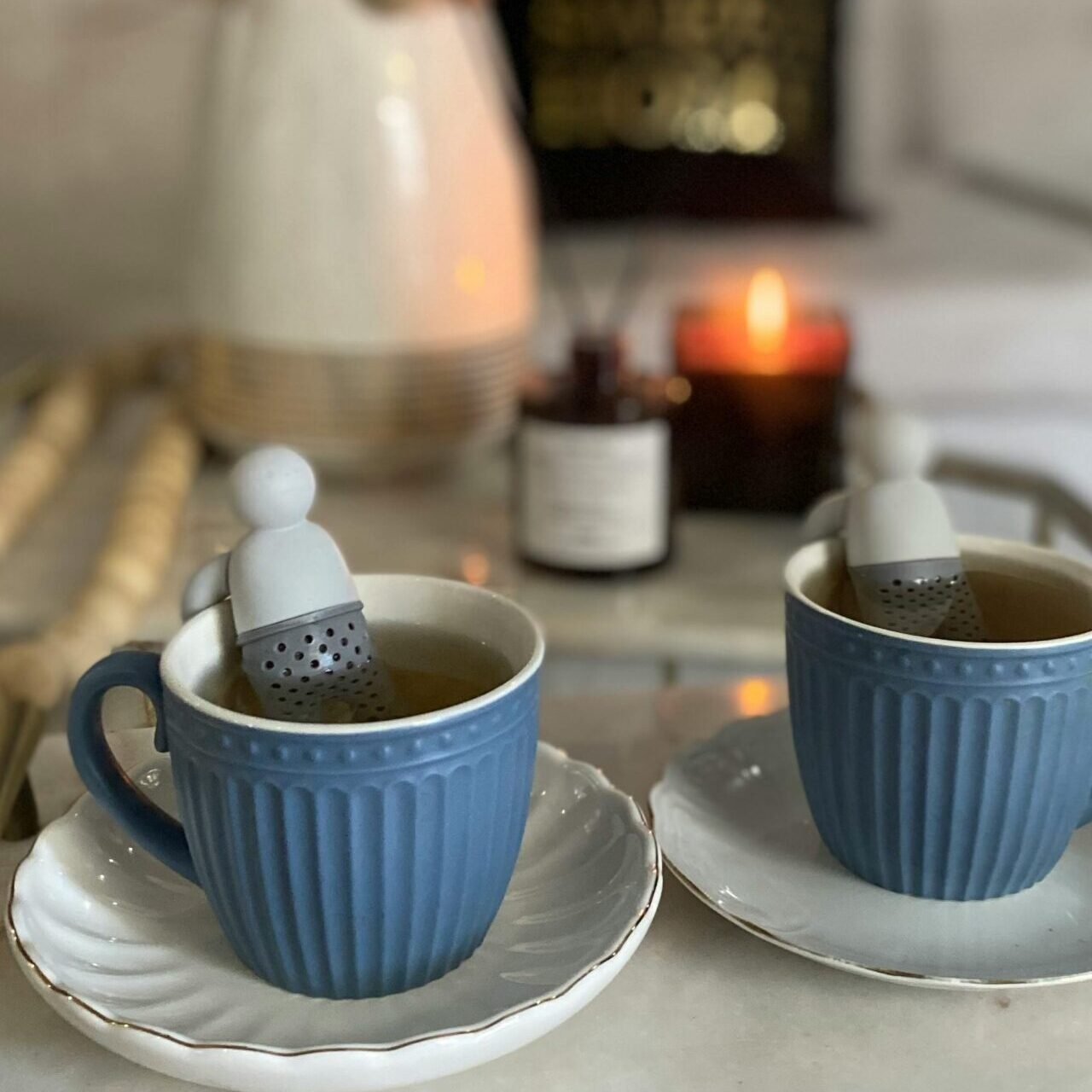
- Stainless Steel: This popular choice resists rust and won’t affect tea flavor. Food-grade stainless steel infusers like those in the Fiore Teaware Collection provide durability and easy cleaning.
- Silicone: Food-safe silicone offers flexibility and heat resistance. These colorful infusers often come in fun shapes but may retain odors from strong teas over time.
- Ceramic: These infusers add a classic touch to tea brewing. They hold heat well but can break if dropped.
- Bamboo: Natural bamboo creates an eco-friendly option for tea lovers. The material adds no taste to your brew but requires more care to prevent mold.
- Glass: Clear glass lets you watch your tea leaves unfurl. This material won’t alter flavors but may break more easily than metal options.
- Plastic: Budget-friendly plastic infusers come in many colors. They can warp or melt at high temperatures if not heat-resistant.
- Silver: Traditional silver tea strainers offer elegance and antimicrobial properties. They need special care and polishing to maintain their luster.
Key Factors to Consider
- Mesh Quality: Fine mesh prevents tea particles from escaping into your cup. Look for tight weaves that still allow water flow for proper steeping.
- Heat Conductivity: Materials like metal transfer heat quickly to hands. Handles or heat-resistant parts make these infusers safer to use.
- Reactivity: Some metals react with acidic teas and alter flavor. Stick with non-reactive materials for the purest tea taste.
Importance of Mesh Size
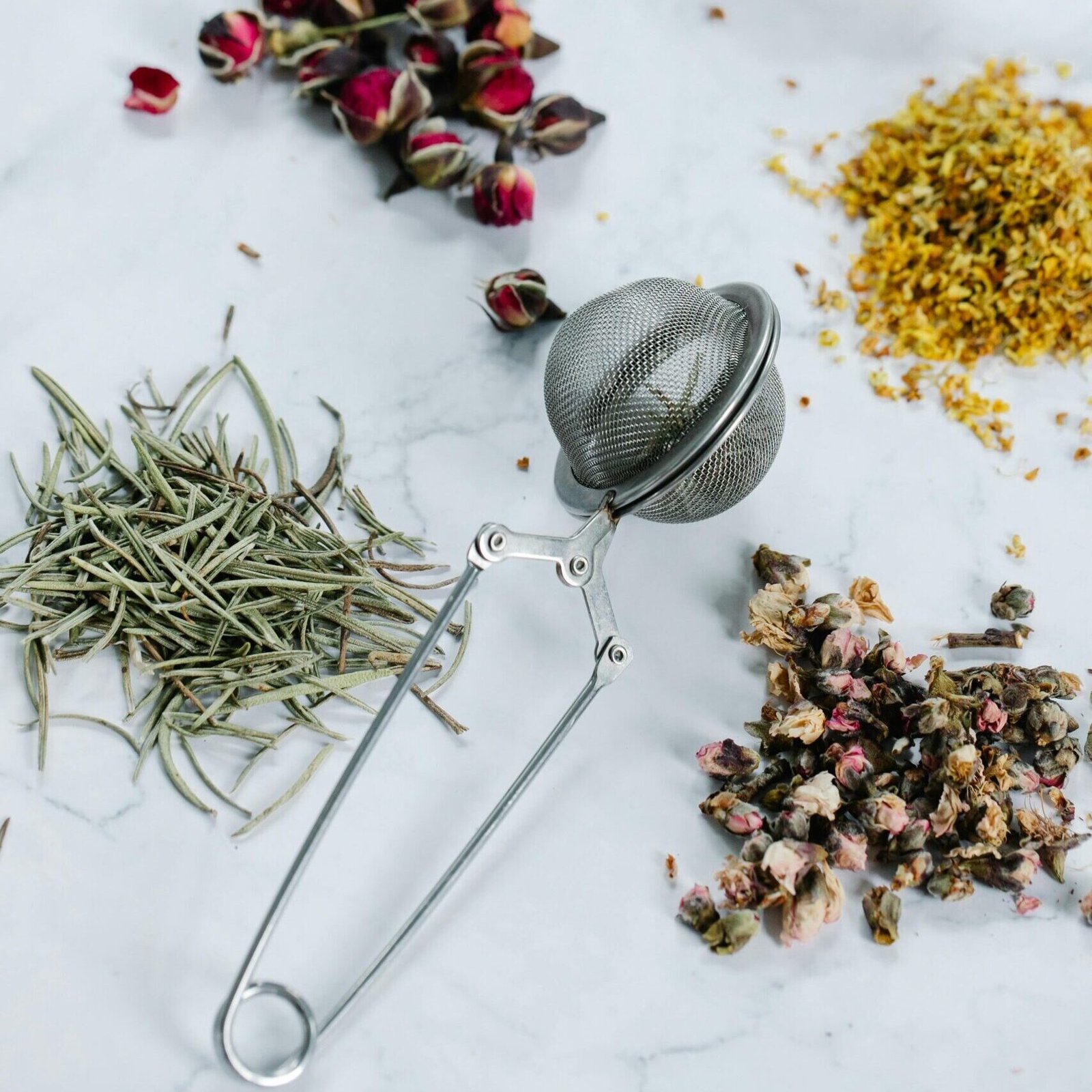
Mesh size plays a crucial role in your tea infuser’s performance. Fine mesh prevents tiny tea particles from escaping into your cup, giving you a clean, sediment-free brew. For delicate white teas or powder-like rooibos, you’ll need very fine mesh openings.
Larger black tea leaves work well with slightly bigger holes that allow proper water circulation while keeping leaves contained.
The right mesh size directly impacts flavor extraction during steeping. Too large, and small particles slip through, creating unwanted bitterness in your cup. Too fine, and water might not flow freely enough to extract full flavors.
Quality stainless steel mesh tea infusers offer the perfect balance for most loose leaf varieties. Many tea enthusiasts prefer infusers with different mesh sizes for various tea types, ensuring each brew reaches its full potential.
Optimal Size for Leaf Expansion
Tea leaves need room to unfurl and release their full flavor. Most tea experts agree that spacious infusers yield better taste compared to cramped ones. The size of your tea infuser directly impacts how well your tea leaves can expand during brewing.
Basket infusers promote generous leaf expansion due to their open design, allowing water to flow freely through the leaves. This results in better extraction of flavors, aromas, and beneficial compounds from your loose tea.
Tea ball infusers, while compact and portable, often restrict leaf movement and limit flavor development. For improved results, choose oval-shaped or larger tea balls that give leaves more space to open up.
Stainless steel mesh infusers with adequate room let tea leaves dance and stretch in hot water. The rule is simple: more space equals better steeping. Your tea experience improves dramatically when leaves can fully expand, making larger baskets the top choice for brewing fine and large leaf varieties alike.
How to Use Tea Infusers Effectively
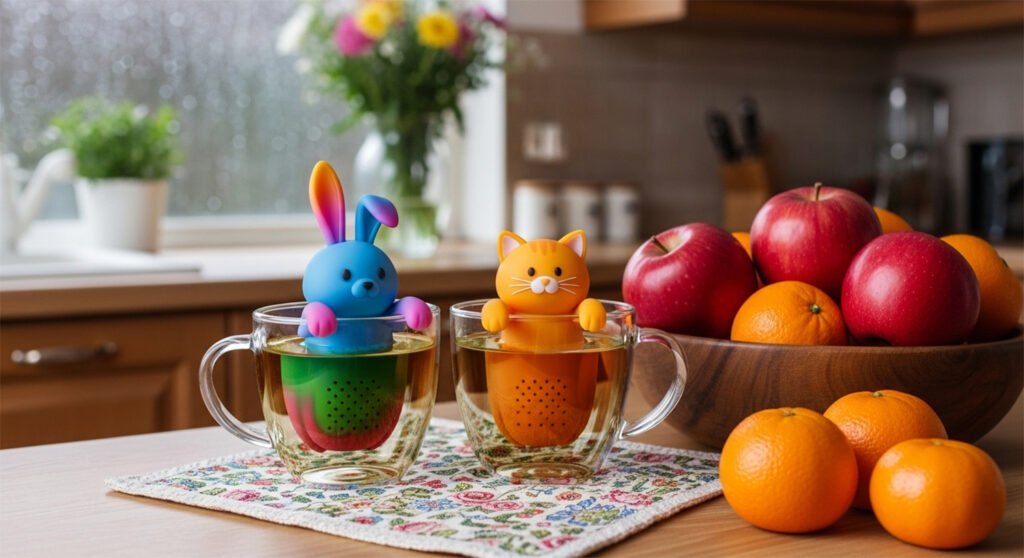
Using tea infusers correctly makes a big difference in your brew quality. These simple steps will help you get the most flavor from your loose leaf tea.
- Select the right infuser for your tea type. Fine mesh works best for small leaf teas while larger holes suit whole leaf varieties.
- Place your infuser securely in your teacup or pot before adding any leaves.
- Measure the proper amount of tea leaves based on your cup size. Most teas need 1-2 teaspoons per 8 ounces of water.
- Fill the infuser with leaves, leaving enough space for expansion. Packed leaves can’t release their full flavor.
- Heat your water to the ideal temperature for your specific tea variety. Green teas need cooler water than black teas.
- Pour the heated water over the infuser, making sure the leaves are fully covered.
- Allow the tea to steep for the recommended time. Black teas often need 3-5 minutes while green teas require just 1-3 minutes.
- Remove the infuser once your tea reaches desired strength. Leaving it too long creates bitter flavors.
- Tap the infuser gently against your cup to drain excess liquid before setting it aside.
- Clean your infuser right after use to prevent staining and flavor transfer. Most stainless steel infusers are dishwasher safe for easy cleaning.
Conclusion
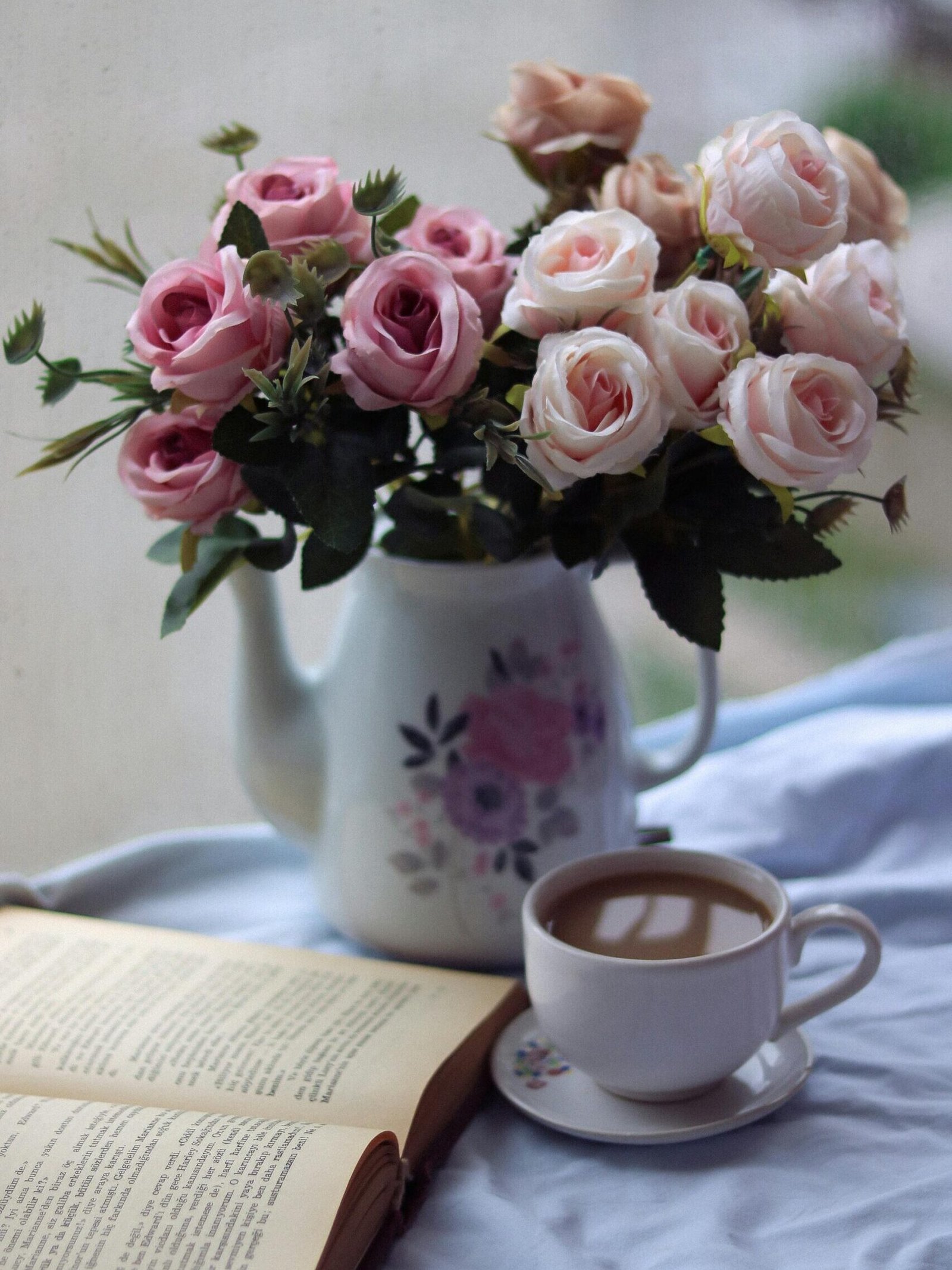
Finding the right tea infuser makes all the difference in your brewing experience. Quality strainers with proper mesh size allow tea leaves to expand fully, releasing their best flavors.
Stainless steel options offer durability while basket designs provide ample space for steeping. Choose an infuser that matches your favorite tea type for optimal results. Your perfect cup awaits with the right tools that balance function, ease of cleaning, and style to improve your daily tea ritual.
For those who enjoy matcha, make sure to check out our recommendations on the best matcha whisks for a perfect blend.
FAQs
1. What is a tea infuser and how does it work?
A tea infuser is an accessory used to brew tea by holding loose tea leaves while allowing the tea to steep in hot water. Most infusers are made of stainless steel with small holes that work like a sieve, keeping the tea leaf inside while letting water flow through for proper infusion.
2. Which tea infuser is best for fine tea leaves?
The Jexcull snap ball tea strainer is excellent for fine tea because it has a tight seal and small holes that prevent leaf escape. Its secure hinge mechanism helps it open and close with ease while keeping even the smallest bits of tea contained during steeping.
3. Are tea infusers better than tea bags?
Tea infusers are often better than tea bags because they’re reusable, eco-friendly, and allow for a fuller flavor from loose leaf tea. They give you freedom to control the strength of your brew and can be used for herbal teas and even some coffee drinks.
4. How do I clean my stainless steel tea infuser?
Simply rinse your stainless steel tea infuser under hot water after each use. For deeper cleaning, soak it in a mixture of baking soda and water to remove stains.
5. Can tea infuser baskets be used in all teapots?
Not all tea infuser baskets fit every teapot. Before purchasing, check the dimensions of both your teapot and the infuser basket. Many brands like Teabloom offer various sizes of tea infuser baskets to accommodate different teapot styles.
6. What features should I look for in a quality tea steeper?
Look for a tea steeper that’s lightweight, easy to use and clean, and made from durable stainless steel. The best steepers have a stylish design with a secure hinge system that won’t accidentally open during use. Some even feature flower-shaped designs that add visual appeal to your tea experience.
References
- https://www.firebellytea.com/blogs/all/tea-steepers-and-infusers?srsltid=AfmBOor0G4yLQVlkNxghnymw2xX8co3AUCGJg49OeeFSW2_GwHu15sQn
- https://blog.mountainroseherbs.com/tea-infusers-guide (2019-06-20)
- https://teaindia.com/blogs/blog/what-is-the-difference-between-a-tea-strainer-and-tea-infuser (2021-10-28)
- https://www.seriouseats.com/best-tea-infusers-7500581
- https://www.goodhousekeeping.com/cooking-tools/g46329688/best-tea-infuser/ (2024-01-23)
- https://www.lifeisbetterwithtea.com/tea-infuser/ (2023-01-31)
- https://teaforte.com/blogs/tea-notes/how-to-choose-a-loose-leaf-tea-infuser (2021-07-29)
- https://senchateabar.com/blogs/blog/tea-infuser?srsltid=AfmBOopPdpvcae7uMcmL5qeQu_Fq0pq1v0TI4k6LQ1P-eau6h99l0pUN
- https://senchateabar.com/blogs/blog/tea-infuser?srsltid=AfmBOoqKkUeRRrrgwBH7HNUTNfw5qMaqj9heuSuxUjbbNF9RfaTe1VRV
- https://senchateabar.com/blogs/blog/tea-infuser?srsltid=AfmBOoq71NezzVBjqllVDvL-J7jevgr0OzK5tBlNGvCysqIWC3cR6uAL
- https://artfultea.com/blogs/101/how-to-use-a-tea-infuser-a-step-by-step-guide?srsltid=AfmBOoqw5yCUmLkam2pdvRYS0BPoQ2dAGvgxVZRo0d2kuvdgkA3AUECg


